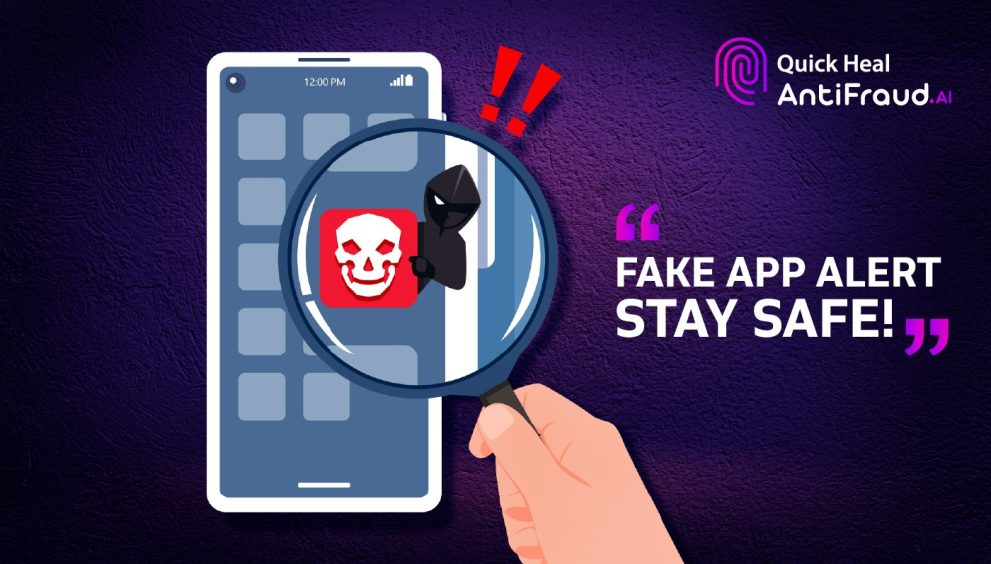Quick money, one tap, no questions asked. That is the hook many fake loan app operators use to target people who need funds quickly. These apps often look convincing, then flip into traps that drain money or misuse data. Enforcement updates show how widespread the problem has become. For instance, Google disclosed that it removed more than 4,700 illegal lending apps from the Play Store over two years after tighter policy checks.
In this blog, you will explore the playbook behind these scams, red flags to spot them, an updated list of examples reported by authorities, simple protection steps, and what to do if you have already been targeted.
How Fake Loan Apps Trap Borrowers?
Fraudsters keep the process fast, friendly, and friction-free at the start, then pile on hidden charges and threats later. Many operations are run through slick websites or sideloaded APKs shared on messaging apps. Police investigations in multiple states have connected these apps to data theft, harassment, and extortion, underscoring the need for total security awareness during downloads and permissions.
1. Easy Loan Approval With No Documents
Scammers promise instant approval without income proof or KYC. The app shows a small approved amount and pushes you to “unlock” it by paying a processing charge.
Example: a borrower agrees to a ₹2,000 “verification fee” to release a ₹5,000 loan. The loan never arrives.
2. Hidden Fees and High Interest
Charges appear after installation as convenience, insurance, or “late confirmation” fees. Interest is recalculated daily to inflate the payable amount.
Example: a ₹5,000 short-term loan silently becomes ₹20,000 through stacked fees and penalties.
3. Data Theft and Privacy Issues
Many fake apps request access to contacts, photos, SMS, and location. This data is misused to pressure repayment or engineer further fraud, highlighting the need for anti-fraud checks and cautious permission settings. Police advisories have flagged blackmail using morphed images and threats sent to contact lists.
Example: after granting contact and gallery permissions, a victim receives threats that edited images will be shared with family.
4. Harassment During Loan Recovery
Callers switch from friendly reminders to daily intimidation. They sometimes spoof caller IDs, send doctored notices, or pose as police officials to create fear. Several police cases describe systematic abuse tied to these apps.
Example: unknown numbers demand money and claim a legal case is “ready to file” unless charges are paid immediately.
5. Fake Loan Forgiveness Tricks
Victims are told their “case can be closed” for a one-time settlement fee. New charges appear after payment, and the cycle repeats.
Example: a borrower pays a ₹3,000 “closure fee,” then receives another demand for ₹7,500 to stop alleged legal action.
6. Red Flags: How to Spot a Fake Loan App
Here are the red flags and online scamming methods these apps often use:
- Sideloaded APK link shared on WhatsApp or Telegram.
- App asks for contacts, gallery, microphone, or SMS access without a clear reason.
- No clear name of the regulated lender behind the app.
- No Key Facts Statement, repayment schedule, or grievance officer info.
- Upfront fees are demanded before any disbursal.
- Publisher name does not match the lender’s registered name.
- Claims that “RBI approved this app” without a verifiable link to a regulated entity. You can check the RBI’s updated list of legal digital lending apps and the NBFC register.
Updated Fake Loan App List (2025 – 2026)
This landscape changes quickly. The names below are illustrative examples that police publicly linked to a single large case in July 2025. Lists evolve, and apps often rebrand. Always verify with official sources before taking any action.
- Credit Pilot
- Creditkeeper
- Inlonecredit
- New-lone
- Ligallone
- Fastcash
- Handycash
- Insta-lone
The Reserve Bank of India now publishes a list of legal digital lending apps associated with regulated entities. Checking that list and confirming the lender’s NBFC registration are strong first filters.
Real Examples of Fake Loan App Scams
Here are some real-world examples:
- Hidden Fee Spiral: a student downloaded a “no-paperwork” app and paid multiple small charges for verification and insurance. The loan was never credited, but new fees kept appearing.
- Blackmail Through Contacts: A borrower who granted contact and gallery permissions later received threats, including morphed images sent to relatives, until payments were made. This pattern matches several police reports.
- Processing Fee Fraud Outside App Stores: A professional responded to a WhatsApp loan offer and kept paying “processing” and “stamp duty” fees to various accounts. No loan was disbursed, and a police complaint followed.
How to Protect Yourself From Fake Loan Apps
Here you will explore how to protect yourself from fake loan apps:
- Use Trusted Stores Only: Avoid APKs from links or third-party sites.
- Verify the Lender: Confirm the lender is an RBI-regulated NBFC or a bank. Cross-check the RBI NBFC register and the RBI’s legal digital lending apps list.
- Check Disclosures: A genuine lender provides a Key Facts Statement, repayment schedule, interest rate, fees, and a grievance officer’s details.
- Scrutinise Permissions: Deny access to contacts, photos, SMS, and the microphone unless necessary.
- Never Pay Upfront Fees: Processing or approval fees before disbursal are a classic red flag.
- Examine Publisher Details: The developer’s name should match the lender or its authorised partner.
- Search Reviews and Media Coverage: Look for credible press coverage or regulatory notices, not only app star ratings.
- Ask “Loan App Real or Fake?”: If anything is unclear, pause and verify using RBI sources or speak to your bank.
What to Do If You Are a Victim of Loan Fraud
Here you will explore what to do if you are a victim of loan fraud:
- Report Immediately: Call the national cybercrime helpline 1930 or file a complaint at the National Cyber Crime Reporting Portal. Speed helps payment gateways and banks try to trace and freeze funds.
- Preserve Evidence: Keep screenshots, transaction IDs, phone numbers, chat logs, app names, and links.
- Inform Your Bank and UPI App: Request reversal attempts or blocks on suspicious beneficiary accounts.
- Revoke Permissions and Uninstall: Remove the app, then review and reset contact, SMS, and storage permissions.
- File a Local Police Complaint: Register an FIR, particularly if there are threats or blackmail.
- Complain to RBI’s Sachet Portal: Use a Sachet to report unauthorised entities or deposit-like schemes.
- Report the App on the Store: If the app is available on a major app store, submit a report so the platforms can investigate.
- Do Not Pay Extortion: Keep records of threats and share them with the police. Several crackdowns trace such networks from victim reports.
Stay Alert and Protect Yourself From Fake Loan Apps
Here you will explore how to stay alert and protect yourself from fake loan apps:
- Download only from trusted app stores and avoid links sent over messaging apps.
- Review and limit permissions to what is essential for a financial service.
- Keep your phone updated and use reputable security software to flag risky apps. Security suites such as Quick Heal can help identify harmful behaviour and block malicious installations.
- Teach family members to recognise online loan scams and to verify lenders on RBI resources.
frequently asked questions
-
How to identify a fake loan app?
Look for sideloaded links, excessive permissions, missing lender details, and upfront charges. Confirm the lender on the RBI NBFC register and the RBI list of legal digital lending apps before sharing data or money.
-
How do I remove my information from the loan app?
Uninstall the app, revoke permissions in Settings, change your device passcode, and monitor accounts for unusual activity. If there are threats or misuse of data, report to 1930 and file a police complaint.
-
How to complain about a fake loan app?
File a report on the National Cyber Crime Reporting Portal or call 1930. Also submit details on the RBI’s Sachet portal if the entity appears to be unauthorised. Preserve all proofs for investigators.
-
Can cybercrime refund money?
Authorities may facilitate freezing of transactions when reported quickly. Outcomes vary case by case and depend on the speed of reporting and the implementation of recovery measures by banks or gateways.
-
How to file a complaint against a fraudulent loan app?
Report at cybercrime.gov.in or dial 1930. Lodge an FIR with local police if there are threats or significant loss. Register a complaint on the RBI’s Sachet portal about the unauthorised lender. Keep all documents and messages as evidence.



